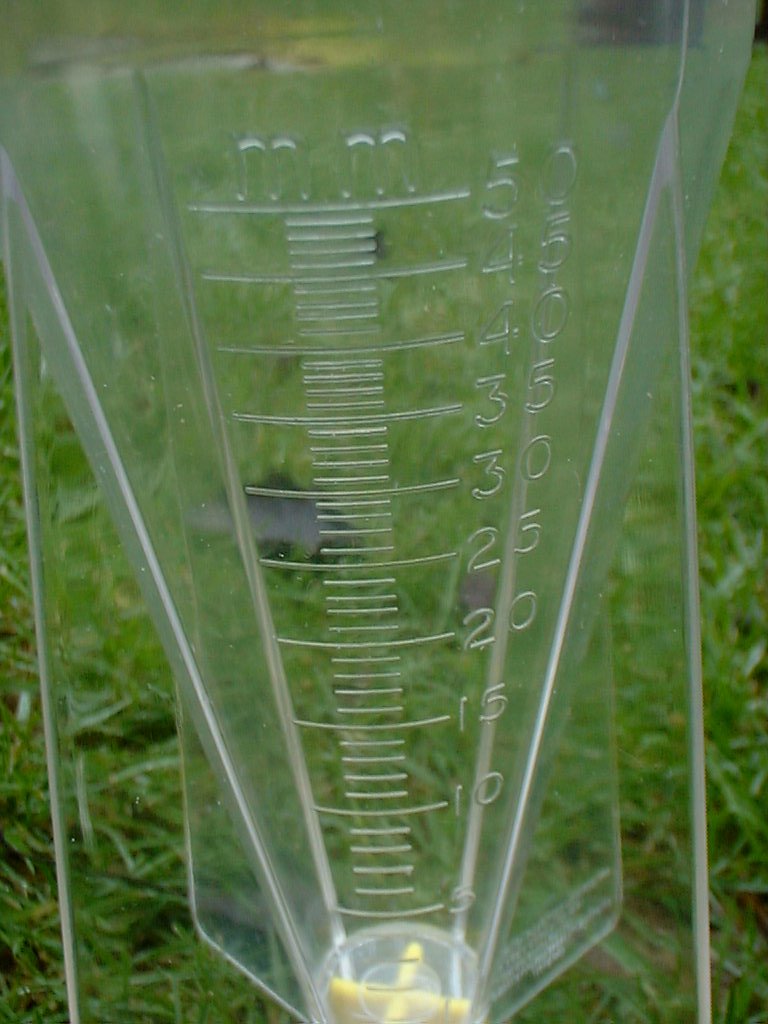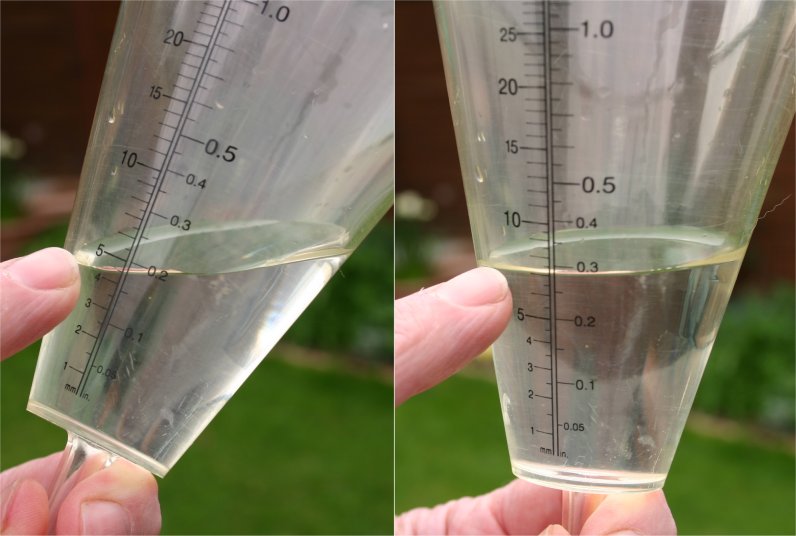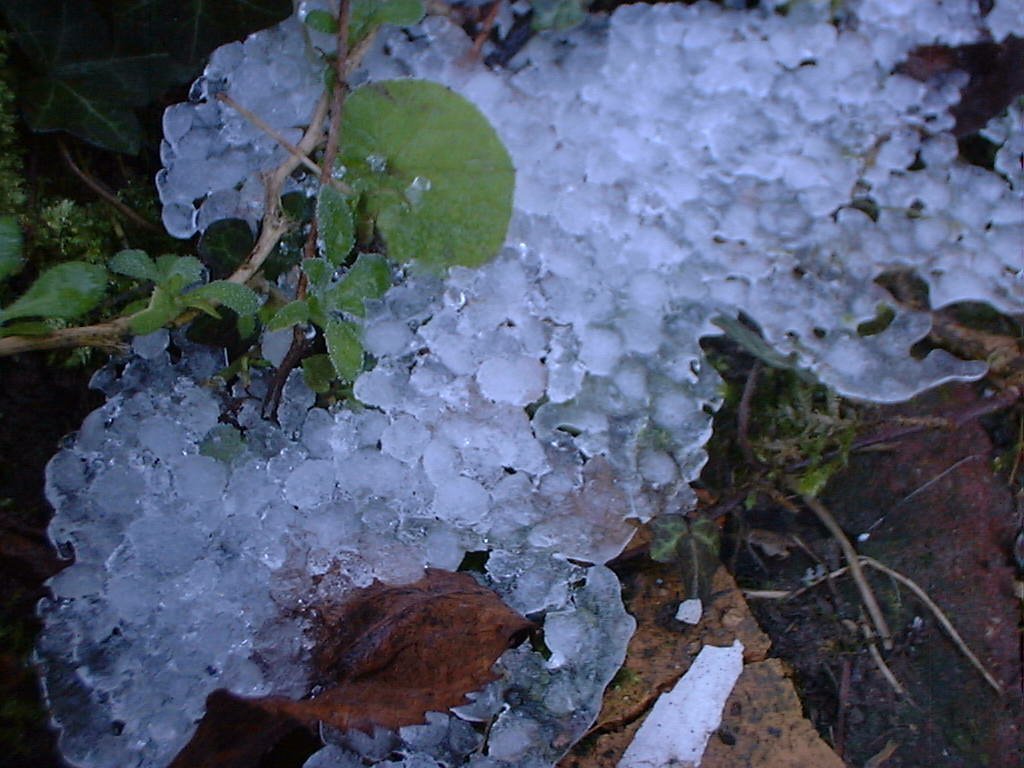Measuring Precipitation
Precipitation is the name given to the various ways in which water falls from the sky and reaches the ground. This can include drizzle, rain, sleet, hail and snow.
The amount of rainfall can be important for a variety of reasons. People who grow plants like to know how much rain has fallen. Those who live near rivers may be affected by how much rain there has been.
This page is just an introduction to Precipitation. To see more you can go to More About Precipitation. Here there is an example of a digital rain gauge. You may also like to have a go at the Rain Gauge Quiz. The colder forms of precipitation can be found on the Below Freezing page. See More About Setting Up for details of where to place your rain gauge.
When you have finished reading about this you may want to return to Collecting Data.
Recording Rainfall
If you only empty the rain gauge once a day at 09.00 you may not know when the rain fell. It is more likely to be before midnight than after. This is because only nine of the 24 hours will have happened on the day of recording. So as with the maximum temperature the reading is entered for the previous day. The data is 'thrown back.' If you observe 6mm of rain on Wednesday it needs to be recorded as the rain for Tuesday. Read more about it here.
This may be one of those instances when automated weather stations have a clear advantage. They record exactly when the rain fell.
Units of MeasurementRain is measured in millimetres. This is because you are measuring the depth
of the rain which has fallen. |
|
The Rain Gauge ScaleA funnel shape is used so that when there is only a little rain it is easier to measure. You can see that the markings at the bottom are further apart because the funnel is narrower there. Nearer the top, where the funnel is wider, the markings are closer together. Record ½ as ·5, ¼ as ·25 and ¾ as ·75. If you make your own rain gauge it can be difficult to measure small amounts of rain. It is fun to make and try out, but you will find a real one much easier to use and more accurate. |
|
Keeping it LevelWhen measuring the rain you need to keep the gauge very level. Take the funnel off its spike and place it on a flat surface. Look at the picture to see the weather watcher reading the scale carefully. The rain gauge in this picture is not funnel shaped. Instead it has a cone sticking up in the bottom of the container. This makes it easier to measure small amounts of water accurately. |
|
How not to do it!Tipping the gauge on its side will give an incorrect reading. This is true in most capacity procedures. The two images on the right show the same amount of water. See how the reading changes if it is not level. |
|
SnowWhen the temperature is cold, precipitation will take the form of snow. It is usual to measure its depth in millimetres. Do make sure that your ruler does not have a 'dead end' or extra bit on the end which is not included in the measurement. A metal ruler like the one in the picture is a good one to use. Clear the area where you measured the snow. You want a fresh start in case you need a reading the next day! |
|
Hail and SleetThere is rarely an opportunity to observe this at the time of taking the weather
readings. It is usually treated as any other precipitation,
as it melts into the rain gauge. |
|
The picture on the right shows the ground after a lot of sleet fell in cold weather. These were quite large balls of ice. In Great Britain the term sleet is used to describe a mixture of rain (or drizzle) and melting snow. |






